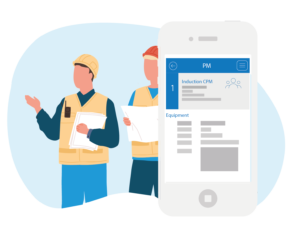More data, more problems: The need for collaboration across real estate teams
Every action that takes place in and around a building has the potential to create data – and lots of it. Information comes from leases, work orders, energy usage alarms, sensors, and more. The people that set foot on your property generate data points, also – badge data for employees, visitors, contractors, footfall analytics – the list goes on and on.
As a result, today’s real estate lessees and property occupiers are dealing with more data than ever. A recent study conducted by IDC found that employees spend 30% of their time searching for, governing, and preparing data. As the volume of data increases, the time spent capturing and combining it is increasing as well.
For real estate CFOs, controllers, facilities managers and space planners, the amount of data now available is overwhelming. Despite this, data-driven organizations are more likely to outperform competitors and achieve higher profitability.
More point solutions, more systems, and more siloed data from more sources make it seem impossible to achieve a unified view of combined portfolio data. Yet it’s critical to business success.
The consequences of misaligned real estate data
Have you ever had to make a business decision based on your gut because the data was not available? The answer is probably yes – at least, it is for me. The next, more important question is, if the data were available, would you have made a different decision? That’s an uncomfortable question because the answer is also likely yes.
Making strategic decisions in a sea of uncertainty keeps real estate leaders awake at night. Even if your lease management, facilities and finance teams are doing a great job, money can still be wasted if their data isn’t being shared with each other.
Lack of collaboration leads to competing priorities for your properties. Most real estate occupiers have horror stories of cost inefficiencies, project misalignment, and unnecessary spend. Maybe you’ve experienced these scenarios:
- Four different vendors performing the same work at the same location with different contractual rates
- An expensive HVAC replacement completed mere months before a lease is terminated
- Missed lease payments
Each of these are prime examples of what happens when real estate, facilities, and finance teams are operating independently without a unified view of the data.
To effectively make strategic portfolio decisions, manage facilities, and track leases, property occupiers must leverage technology to drive collaboration, data integrity, and trust across the organization.
But sometimes, adding more technology creates even more problems.
More tech, more complexity: The pros and cons of point solutions
In the post-pandemic world, real estate plays a major role in the overall strategy of the business. To better understand real estate costs and usage before and during COVID, many organizations invested in point solutions: specialist systems designed to support a specific function of the business. For real estate occupiers, this included maintenance requests, work order tracking, lease administration, space planning, and visitor management, among other things.
However, many point solutions don’t integrate into existing systems. The resulting data is often siloed to only that specific area of the business. An increase in point solutions means that businesses are adding more disparate systems to their technology portfolio without a clear data governance plan.
Simply put, the solutions are not “talking” to each other. While this strategy may provide short-term value, it leads to long-term problems.
More technology means more data coming from different solutions, which equals more complexity. For businesses looking to reduce costs, it’s counterintuitive to add more technology, more data, and more complexity.
Four steps to creating a real estate data governance plan
Teams continue to seek closer collaboration, but finding efficient ways to share data and create a unified source of truth remains complicated.
The good news is that technology can help real estate businesses cut through the complexity and get access to the right data and insights so you can avoid wasting time and money.
So how do you get started? What is a data governance plan? How do you create a data culture in your organization? It’s easy to get overwhelmed, but let’s take a step-by-step look at creating a data governance plan.
1. Understand the data you have today.
Businesses have significant amounts of data already, but oftentimes it isn’t accessible to those who need it. By documenting the solutions you have in place as well as the integrations between those solutions, you will likely find that you already have the data to answer questions and drive decisions about your portfolio, it is just not readily available.
2. Define the data rules.
When combining data, you will need a unique identifier that is available in each of the solutions. These unique identifiers may be at the property or lease level, depending on the amount of detail in your data. In instances where different identifiers have been used in different solutions, you’ll need to do a mapping exercise to standardize the data to a common structure. Once you have a unique identifier, clear data ownership will need to be defined.
Data ownership in this case refers to the solution owner: Which solution owns the data? Which solution is the solution of record – the final answer for that data point? For example, a lease administration solution can be defined as the source solution for accounts payable data. Accounts payable data is entered and tracked here and then an accounts payable file is produced which sends the payment data to a corporate accounts payable solution to complete the payment. The corporate accounts payable solution is the solution of record for what payment transfers have occurred. Understanding solutions of record is critical when creating a data governance plan so that everyone understands which solutions update data and which solutions hold the official answer to portfolio and business questions, such as, have we paid our rent?
3. Document the data pain points.
Understanding data pain points is a critical step in implementing a data governance plan. Data pain points can include:
Duplicate data entry – are employees spending time entering data more than once? Is the data entered exactly the same or are there data integrity issues as a result?
Stale data – are employees downloading data to Excel? Are certain reports being published infrequently, meaning decisions are being made based on old data?
Hard to find data – what are the questions about your business that you either cannot answer or that take a significant amount of time to answer?
4. Partner with a technologist.
Now that you’ve completed the first three steps, it’s time to partner with a technology company that provides solutions for combining and increasing the accessibility of data.
Uncover your source of truth with MRI Agora Insights
At MRI Software, our answer to the data challenges of property occupiers is MRI Agora InsightsTM. It embodies our vision of a hyperconnected world where portfolio data is combined and readily available – a world that is free of duplicate data entry and offers one source of truth for your business.
MRI Agora Insights synchs lease, facilities, project, utilization, and financial data, providing unparalleled visibility across your properties and leases. The data and analytics platform offers a set of standard portfolio dashboards that can be modified by you and your team, and it delivers data at the row level of detail through Insights Anywhere Cards. Insights Anywhere Cards are popup boxes that appear within a solution and display data related to a particular record such as a property, building, or lease.
Making data readily available as part of the standard user workflow has a significant impact on day-to-day business decisions about data. MRI Agora Insights not only considers the importance of portfolio data at the aggregate level but also ensures that users can see key data as part of their day-to-day business processes. Consider the example mentioned earlier of the HVAC replacement. If the Lease Administrator had seen a list of open and upcoming projects when hovering their cursor over the lease, he or she would have known to reach out to the Project Management team. Or, if the Project Management team had seen an upcoming lease option date when hovering their cursor over the location in the Project Management solution, they would have known to check with the Lease Administration team.
With MRI Agora Insights, real estate managers, CFOs, controllers, and facilities managers can make strategic, cost-effective decisions and operate more efficiently regarding maintenance projects, vendor and contractor management, project management, space utilization, and lease management. As a result, your business can spend less time combining data and spend more time analyzing and taking action – transforming you into a truly data-driven business.
For more information about MRI Agora Insights and how it can help significantly reduce the amount of time real estate teams spend combining data and make the data accessible to those who need it, watch the webinar here.
Lease Accounting Software
Comprehensive, integrated lease accounting software for every type of asset.

6 Ways Tenants Overpay on Leases
Optimize your lease agreement to avoid hidden costs and maximize value. Many commercial real estate tenants unknowingly overpay on their leases, a costly oversight that can erode business profitability. Hidden rebates, complex terms, and subtle claus…

